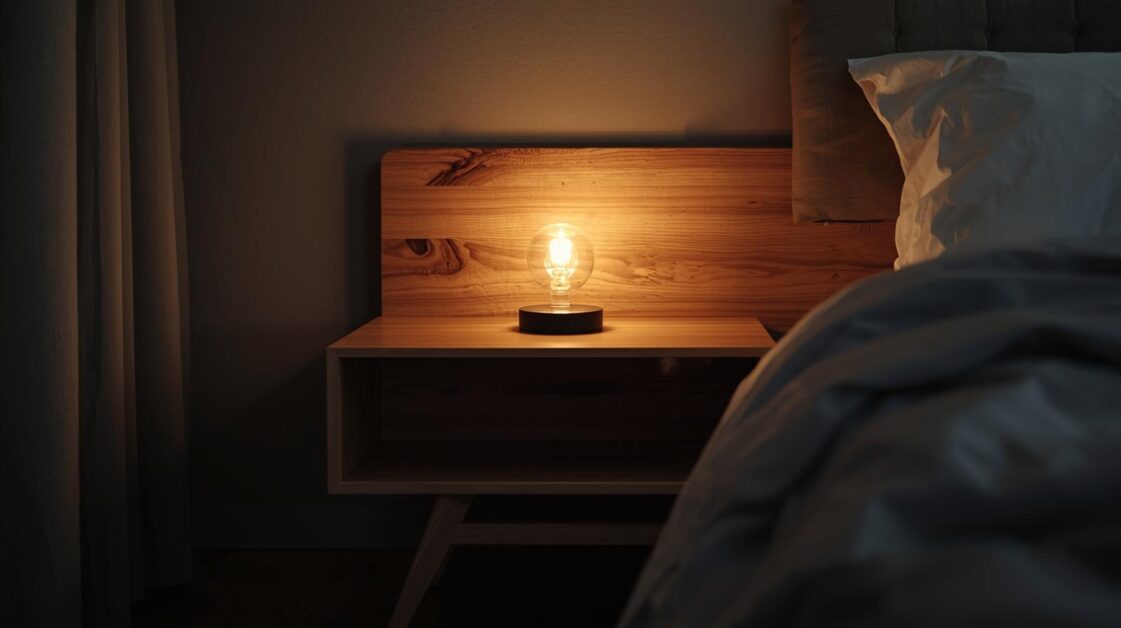
Sleep is supposed to be your time to reset — a moment of quiet, calm, and recovery. But while most people focus on mattresses, blackout curtains, and white noise machines to improve their sleep, there’s one unlikely culprit that might be sabotaging your rest: your nightstand.
That small table beside your bed may seem harmless, but its clutter, dust, and grime can silently impact your sleep hygiene. For many households in Moorpark — where the pace of life is calm and family-centered — maintaining an organized and peaceful sleep space is essential for wellness.
Here’s why your nightstand deserves a closer look — and how cleaning it can improve your sleep, your health, and your overall mindset.
Nightstands Are Clutter Magnets
Think about everything that lands on your nightstand in a week: books, glasses, tissues, receipts, vitamins, phone chargers, mail, hair ties, water glasses — the list goes on.
This small surface often becomes a dumping ground, and that clutter translates into mental noise. Studies show that cluttered environments can increase stress and reduce the ability to relax. When your nightstand is overflowing, your brain registers it as “unfinished business” — even when your eyes are closed.
In a place like Moorpark where homes often balance practicality with comfort, keeping nightstands clear can turn your bedroom from a utility space into a sanctuary.
Dust, Dander, and Sleep Disruption
Nightstands aren’t just cluttered — they’re dusty. And if they’re not cleaned regularly, they become a haven for:
-
Dust mites
-
Pet hair
-
Pollen
-
Dead skin cells
-
Moisture from water glasses or humidifiers
If you find yourself waking up with itchy eyes, sneezing, or feeling congested, your nightstand might be partly to blame.
This is especially important for households with pets or for residents in semi-rural pockets of Moorpark, where open windows and outdoor air can carry in allergens.
How to Properly Clean Your Nightstand
Step 1: Clear It Off
Remove everything from the surface and drawers. Group items into:
-
Essentials (keep)
-
Occasional use (store elsewhere)
-
Clutter (toss or relocate)
Step 2: Dust Thoroughly
Use a microfiber cloth to remove dust from:
-
Surface top
-
Drawer interiors
-
Underneath and behind the stand
-
Lamp bases and other items
Pay attention to the space between the nightstand and the wall, where dust collects but often goes unnoticed.
Step 3: Disinfect the Surface
Use a gentle, non-toxic cleaner that’s safe for wood or composite furniture. Avoid bleach or harsh chemicals near where you sleep.
Step 4: Organize What Goes Back
Only replace what truly belongs. A lamp, alarm clock, a book, maybe a small dish for jewelry or hair ties. The goal is minimalism.
Drawer organizers can be useful for keeping charging cables, lip balm, or sleep masks in order.
How Often Should You Clean It?
For most Moorpark homes, once a week is a good rhythm for a quick wipe-down, and a deeper clean once a month.
If you live with pets, or if your bedroom gets a lot of natural air circulation, dust may accumulate faster. In those cases, a twice-weekly surface cleaning may be necessary.
Psychological Benefits of a Clean Sleep Space
There’s more than just allergy reduction at stake. A tidy nightstand contributes to:
-
Lower cortisol levels: Clutter creates low-level stress that affects hormone regulation.
-
Better sleep cues: A clean space tells your brain it’s time to wind down.
-
Improved self-discipline: Tidying this small area sets the tone for other positive habits.
-
Less decision fatigue: Fewer distractions means fewer choices to make before bed.
The Role of Professional Cleaning in Bedroom Hygiene
While many people stay on top of surface-level cleaning, it’s easy to overlook the small but important corners — like baseboards near nightstands, light switches, outlets, and under-the-bed spaces.
Professional house cleaning in Moorpark often includes these forgotten details. Whether you’re preparing for guests or simply need a monthly reset, a detailed cleaning session can restore a sense of peace to your sleeping space.
These services often go beyond the surface to handle tasks like:
-
Removing dust from vents and blinds
-
Vacuuming under furniture
-
Cleaning decorative objects and lamps
-
Disinfecting commonly touched surfaces
Quick Tips for Maintaining a Minimalist Nightstand
-
Use a tray to corral daily-use items
-
Limit electronics — move your phone charger further from bed
-
Install a wall-mounted lamp to free up surface space
-
Rotate books — only keep one at a time bedside
-
Use drawer dividers for small items
Sleep Hygiene Starts With Small Habits
Your nightstand is more than furniture — it’s a mirror of your sleep routine. In Moorpark, where many households balance work, school, and wellness goals, small adjustments in your living space can create ripple effects in your daily health.
Keeping your nightstand clean may seem minor, but it helps signal to your brain that it’s time to rest, not worry.
And if life gets in the way, outsourcing that reset to a professional cleaning service ensures that your space — and your sleep — are always treated with the care they deserve.